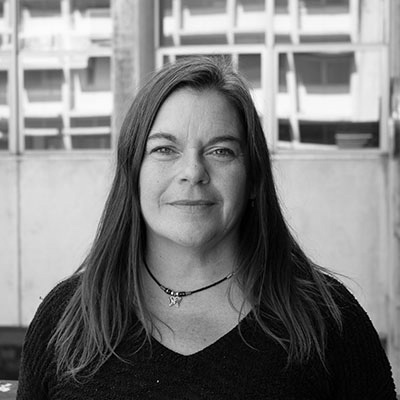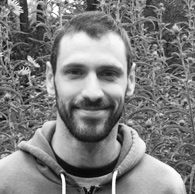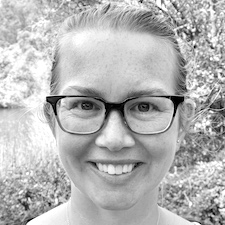Blake Garden
Blake Garden occupies 10+ acres of rolling terrain in Kensington, featuring large rock outcroppings, several reaches of Cerrito Creek, and sweeping views of the San Francisco Bay. You’ll encounter a range of landscapes here, including a formal garden with a reflecting pool, a shady canyon with towering redwoods, and a California native wetland zone populated by Pacific Chorus frogs.
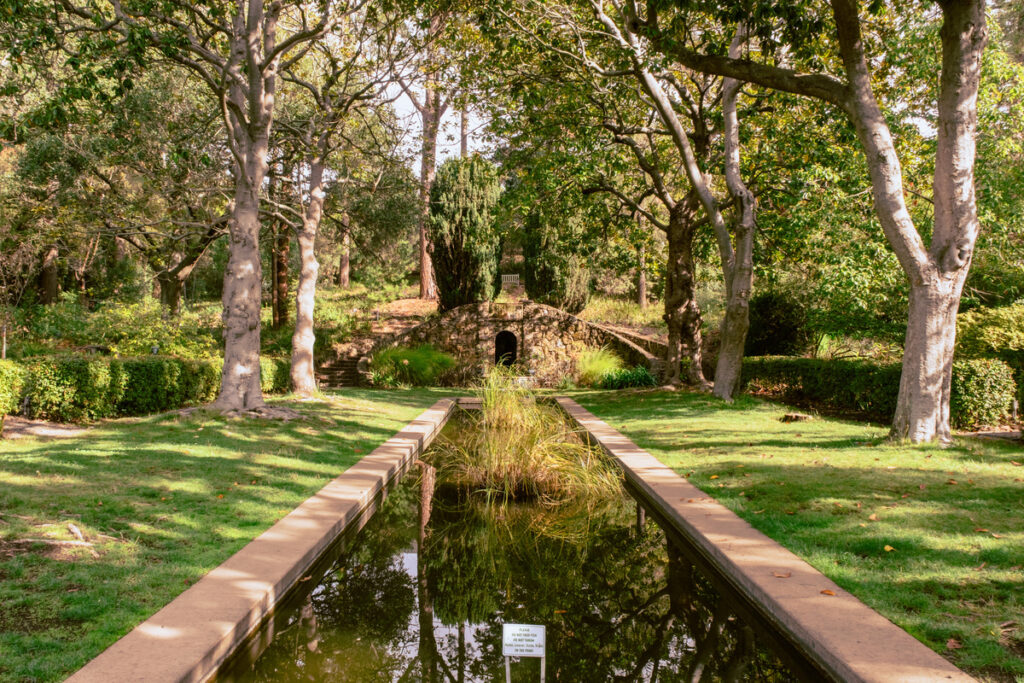
In 1957, the Blakes donated the property to UC Berkeley as a resource for experiential learning for landscape architecture students. Blake Garden continues to serve as an outdoor teaching and research laboratory for the Department of Landscape Architecture & Environmental Planning.
In the garden, you’ll find numerous projects designed and built by Berkeley faculty, staff, and students, from bee habitats to mosaic benches. Other highlights include a pergola by landscape architect Garrett Eckbo, the Square Garden with stunning flowering magnolias, and a native pollinator garden.
BERKELEY’S LANDSCAPE LABORATORY

Blake Garden is the ideal spot for hands-on study and experimentation for MLA students. As an MLA student, you’ll take your plant identification courses here and have opportunities to site independent study projects in the garden. We also offer work-study programs, internships, and volunteer opportunities.
You can also participate in various projects including:
- Invasive species identification + control
- Planting and transplanting
- Propagating plant material
- Pruning trees + shrubs
- Wall, path, and seating construction
- Garden bed restoration
- Composting + developing soil health
- Integrated pest management
- Water management
And only students in Berkeley’s Department of Landscape Architecture & Environmental Planning get to celebrate their graduations at this special spot!
VISITOR INFORMATION
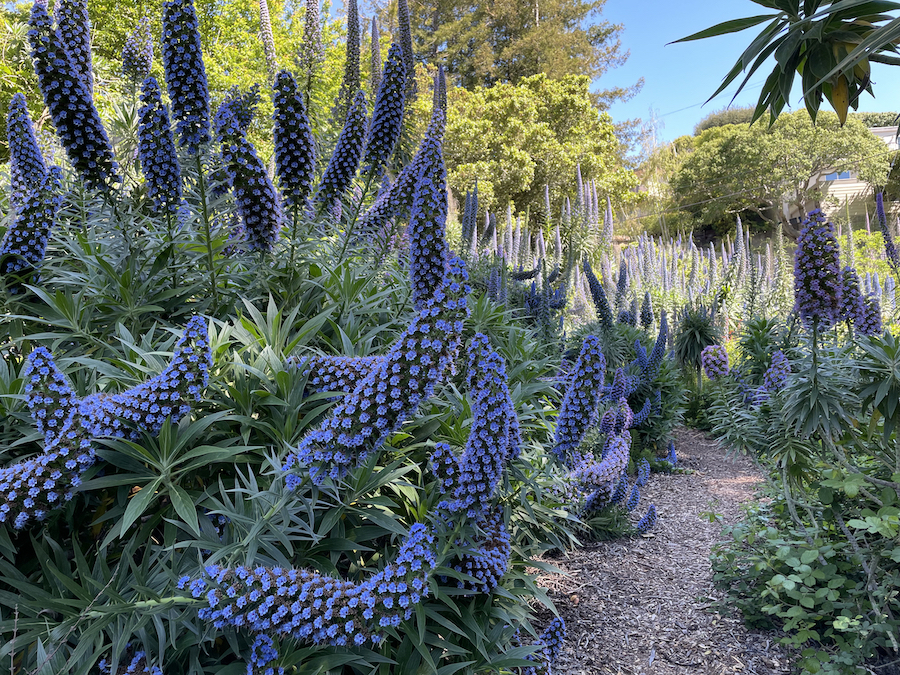
Blake Garden is built in the Kensington hills, with steep slopes throughout the garden. Parts are accessible by wheelchair. Visitors are welcome and parking is free. Please email Blake Garden staff for more information.
Blake Garden sits on the territory of xučyun, the ancestral and unceded land of the Chochenyo-speaking Ohlone people.
HOLIDAYS + CLOSURES
Blake Garden is closed the following holidays:
- Presidents’ Day
- Cesar Chavez Day
- LAEP Graduation (mid-May)
- Memorial Day
- Juneteenth
- Independence Day
- Labor Day
Due to weather and administrative days, Blake Garden may be subject to closure on short notice.
- Visitor Info + Tours
- Volunteer Opportunities
Restrooms
Restrooms are located at the greenhouse.
Tours
Tours are offered the second Thursday of every month, 2 p.m.–3.p.m. and are free and open to the public. Registration is recommended, please email Blake Garden to register.
Tours are also available upon request for groups of 10 and more. Please contact Blake Garden staff for more information.
Dogs
Well behaved dogs on leash are welcome in the garden. Owners must clean up after their pets.
Trash
Please pack out and take all trash with you.
Children
Children are welcome! We ask parents and children to stay on the paths, not to throw anything into the pools, no picking of plants, flowers or fruits, no tree and rock climbing. There are several parks nearby with play structures. There are steep slopes in the garden, some with stairs but baby carriages can be used with caution.
Maps
Trail maps are available at Blake Garden.
Virtual Tour with Nearcube
Nearcube provides visitors with a virtual and detailed garden map. Visitors can download and use Nearcube for virtual tour, gaining a deeper understanding of the garden’s themed section and history, in a fun and engaging way. It can also assist with trip planning and finding features such as benches, restrooms, and parking.
Blake Garden provides a wonderful opportunity to learn about plants while making a valuable contribution to the welfare of the garden. You can work in a beautiful environment and get to know people who are knowledgeable and passionate about the garden, its plants, and horticulture. Email Blake Garden Staff for more info.
HISTORY OF BLAKE GARDEN
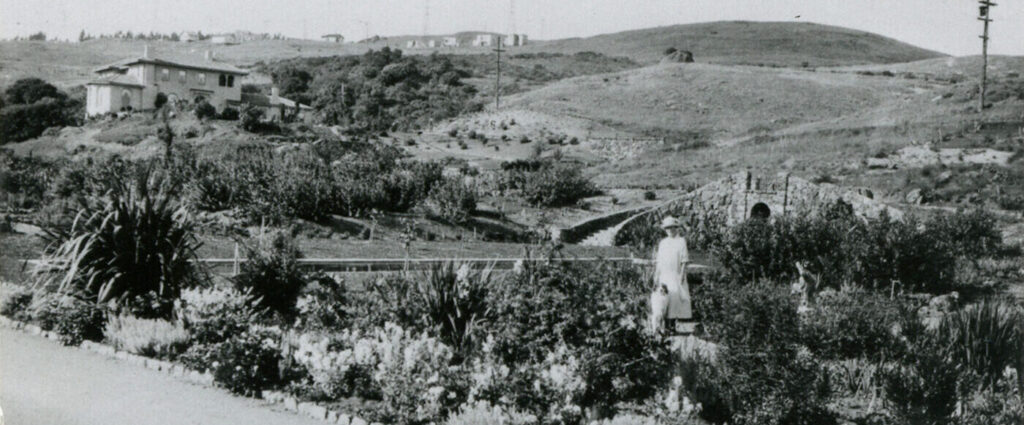
UC Berkeley alums Anson Blake, Anita (Symmes) Blake, and Mabel Symmes moved to this rugged hillside site in 1922 and transformed the property into extensive gardens surrounding their residence. Anita, along with her sister Mabel — one of the first students to enroll in UC Berkeley’s landscape architecture program after its founding in 1913 — created the initial garden plan and established the major plantings.

The garden’s development began in the early 1920s when Edwin and Anita Blake of Berkeley sought a new site for their home in order to make way for the university’s proposed football stadium to be built at the entrance to Strawberry Canyon. Although the site had previously been purchased as a potential quarry, they realized that its true value was in its richly varied terrain, unusual rock outcrops, and the spectacular views of San Francisco and the Bay Area.
The garden was important from the beginning. So much so that when the house was designed, the Blakes impressed on the architect, Walter Bliss, that it be sited to take advantage of the views and shelter a portion of the garden from western marine exposure. Groves of laurel, coast redwood, canary island pine, acacia, and lacebark were planted in exposed areas throughout the garden using this approach.
The property, originally 22 acres, was designed to incorporate two homes, one for each of the brothers, Anson and Edwin Blake. Mabel Symmes, one of the first students enrolled in the University of California, Berkeley’s Department of Landscape Architecture and Environmental Planning, and her sister, Anita Blake, created the first garden plan.
Symmes and Blake created a progression of spaces by dividing the site into separate areas that reflected the varied topography and microclimates in the garden, linking them informally. Thus, the visitor could experience the garden’s diversity and unique terrain in an intimate and logical way.
The garden is half its original size today. With Blake’s death in the mid 1950s, the 22 acre property was divided into two parcels. The Anson Blakes retained 10.5 acres around their house. Edwin’s house retained a two acre parcel, leaving the remaining land to be divided into small housing lots. Eventually, Edwin’s house was donated to the Roman Catholic Church, which established a Carmelite Monastery on the site.
In 1957 Mr. and Mrs. Blake deeded their house and garden to the University of California, “reserving unto themselves and the survivor of them the right to occupy the property for life.” In 1962, the house and garden passed to the University, and in 1967 the decision was made that the house would be used as the official residence of the President of the University of California. The garden’s management was given to UC Berkeley’s Department of Landscape Architecture and Environmental Planning as a resource for its programs.
The garden has been used as an outdoor laboratory for plant identification, planting design, the study of problems in spatial relationships, and other studies in landscape architecture and environmental design since the 1960s. Under the guidance of succeeding directors, such projects as surveying, mapping, and photographing the site, as well as cataloging plants, have been undertaken.
The Blake Estate Oral History Project was produced by the Bancroft Library & the Regional Oral History Office with interviews conducted by Suzanne B. Riess in 1986 through 1987.
The Blake Estate Virtual Collection, created by the College of Environmental Design Archives includes a number of historic images and maps of Blake Garden. It also includes a collection of photographs, documents, surveys and site plans, and landscape architecture students design projects documenting the garden, and the estate’s history as the private residence of Anson S. and Anita Blake and later as a teaching resource owned and managed by the University of California, Department of Landscape Architecture & Environmental Design.
Our Staff
CONTACT US
- Phone + Address
- DONATION BY CHECK
Phone:
510.590.0544
Blake Garden
70 Rincon Road
Kensington, CA 94707
Address:
Blake Garden
University of California, Berkeley
Department of Landscape Architecture & Environmental Planning
202 Wurster Hall, #2000
Berkeley, CA 94720-2000
If you would like to send a check, please make funds payable to:
UC Berkeley Foundation
Mail to:
University of California Berkeley,
Donor and Gift Services,
1995 University Avenue, Suite 400
Berkeley, CA 94704-1070
Memo: Blake Gardens Fund #FN7561
